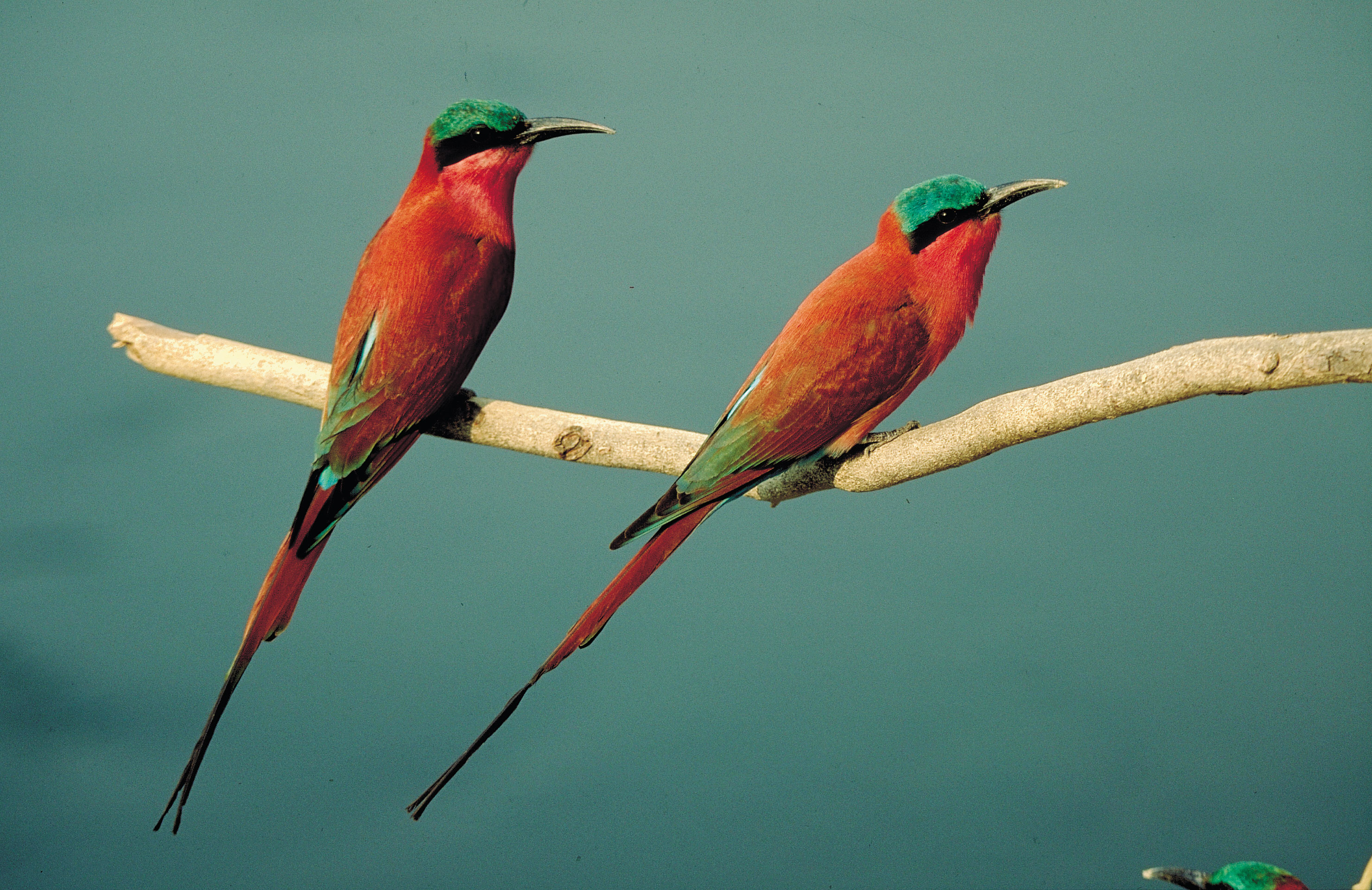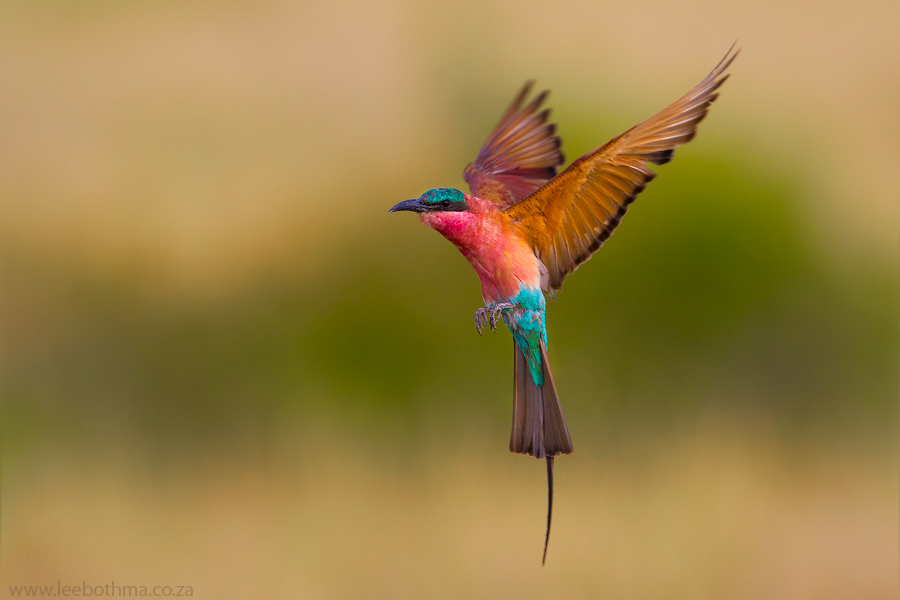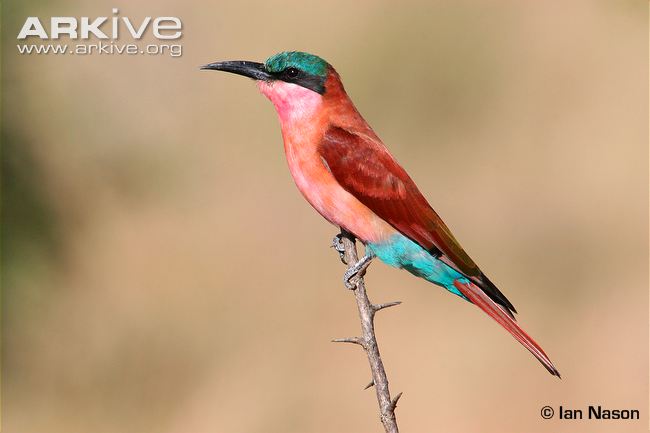
Merops nubicoides
TAXONOMY
Merops nubicus Gmelin, 1788, Nubia. Two subspecies.
OTHER COMMON NAMES
English: Southern carmine bee-eater: French: Guкpier carmin;
German: Karminspint; Spanish: Abejaruco Carmesн.
PHYSICAL CHARACTERISTICS
9.5–10.5 in (24–27 cm), excluding tail streamers of up to 4.75
in (12 cm); 1.2–2.1 oz (34–59 g). Upperparts are predominantly
carmine with contrasting beryl-green crown, chin,
cheeks, and rump. Black mask. Throat is olive-green but appears
azure to greenish blue against the light. Belly is carmine
shading to azure on undertail-coverts.
DISTRIBUTION
Disjunct
DISTRIBUTION
in Africa. Occurs from Senegal to Somalia,
north of the Congo Basin. In winter, these northern birds
move south into Sierra Leone, Nigeria, Cameroon, or across
the continent to Uganda, Kenya, and Tanzania. In the south,
they occur from the Okavango headwaters in Angola east to
Mozambique, south into northern Botswana and southern
Zimbabwe. Non-breeding birds spread into northeast South
Africa and the Transvaal and north into Angola, southern
Zaire, Burundi, and west Tanzania.
HABITAT
Savannas, open woodlands, lakeshores, and mangroves in
coastal regions.
BEHAVIOR
Has three-stage migration pattern in northern and southern
tropics. In the southern tropics, from breeding grounds, travels
south from December onward, and back north in March to
August, until breeding season. In the northern tropics, the
birds move north following breeding.
FEEDING ECOLOGY AND DIET
Nearly all food is taken in continuous flight. The bird is common
at bush fires, where it swoops above the leading edge to
capture fleeing insects. In northeastern savannas, it sometimes
associates with large ungulates and large cursorial birds (e.g.,
ostrich, bustards), using their backs as a perch from which to
sally after insects disturbed by grazing animals.
REPRODUCTIVE BIOLOGY
Large breeding colonies of 100–1,000 nests are common. Nests
occur in cliffs or on flat ground, where colonies are often
larger—2,000–3,000 nests. North of the equator, egg-laying
occurs from February to May (later farther north), and in the
southern tropics from September to November.
Cooperative breeding has not been confirmed, although casual
observations suggest it is likely.
CONSERVATION STATUS
Not threatened.
SIGNIFICANCE TO HUMANS
None known.
Photo Gallery of - Carmine bee-eater




 Animalia Life
Animalia Life